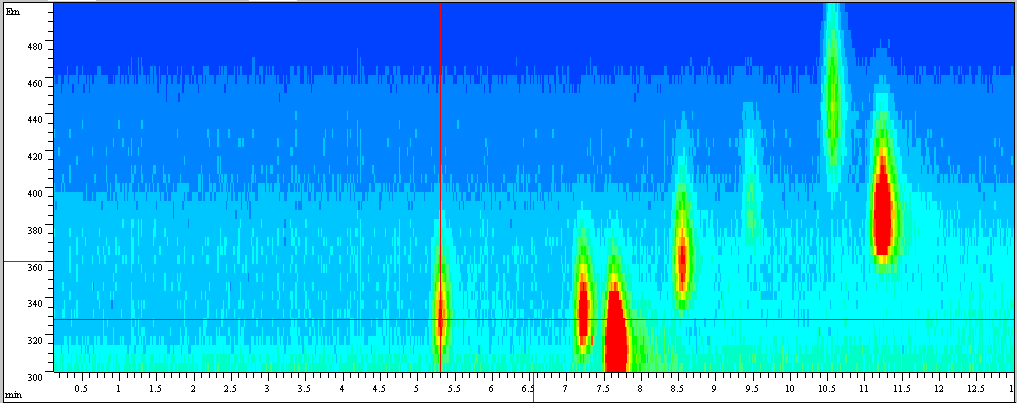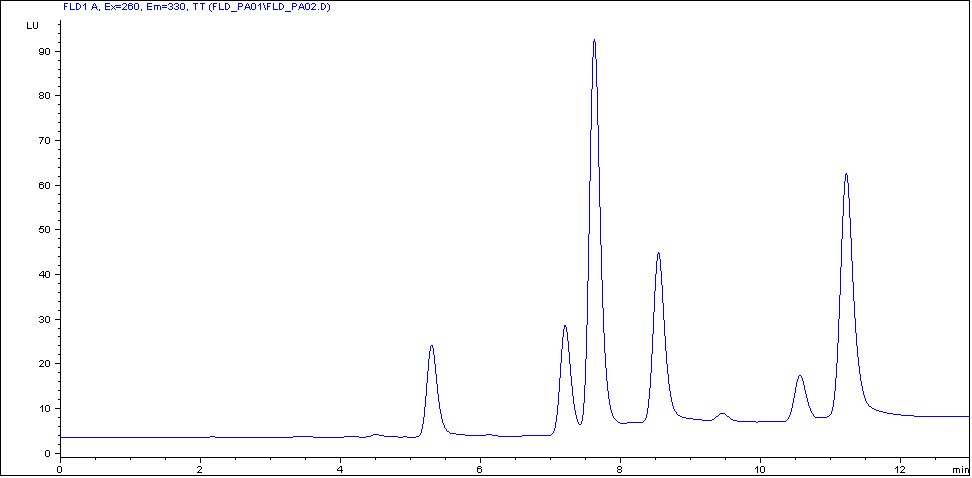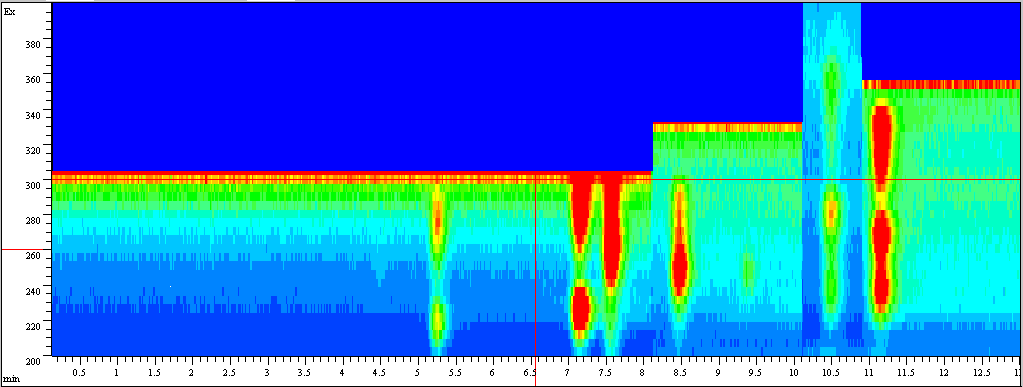Setting the Chromatographic Conditions
This example uses the following chromatographic conditions (the detector settings are shown in Detector settings for emission scan).
|
Mobile phases |
A = water = 50 % B = Acetonitrile = 50 % |
|
Column |
Vydac-C18-PNA, 250 mm x 2.1 mm i.d. with 5 µm particles |
|
Sample |
PAH 0.5 ng |
|
Flow rate |
0.4 ml/min |
|
Compressibility A (water) |
46 |
|
Compressibility B (Acetonitrile) |
115 |
|
Stroke A and B |
auto |
|
Time Table |
at 0 min % B=50 |
|
|
at 3 min % B=60 |
|
|
at 14.5 min % B=90 |
|
|
at 22.5 min % B=95 |
|
Stop time |
26 min |
|
Post time |
8 min |
|
Injection volume |
1 µl |
|
Oven temperature (1200) |
30 °C |
|
FLD PMT Gain |
PMT = 15 |
|
FLD Response time |
4 s |
-
Wait until the baseline stabilizes. Complete the run.
Load the signal. (In this example just the time range of 13 min is displayed).

Figure: Chromatogram from Emissions Scan Use the isoabsorbance plot and evaluate the optimal emission wavelengths, shown in the table below.

Figure: Isoabsorbance Plot from Emission Scan Peak #
Time
Emission Wavelength
1
5.3 min
330 nm
2
7.2 min
330 nm
3
7.6 min
310 nm
4
8.6 min
360 nm
5
10.6 min
445 nm
6
11.23 min
385 nm
Using the settings and the timetable (from previous page), do a second run for the evaluation of the optimal excitation wavelength.
Figure: Detector settings for excitation scan -
Wait until the baseline stabilizes. Start the run.
Load the signal.

Figure: Chromatogram - Excitation Scan at Reference Wavelength 260/330 nm Use the isoabsorbance plot and evaluate the optimal excitation wavelengths (in this example just in the time range of 13 minutes).

Figure: Isoabsorbance Plot - Excitation The table below shows the complete information about emission (from Use the isoabsorbance plot and evaluate the optimal emission wavelengths, shown in the table below.) and excitation maxima.
Peak #
Time
Emission Wavelength
Excitation Wavelength
1
5.3 min
330 nm
220 / 280 nm
2
7.3 min
330 nm
225 / 285 nm
3
7.7 min
310 nm
265 nm
4
8.5 min
360 nm
245 nm
5
10.7 min
445 nm
280 nm
6
11.3 min
385 nm
270 / 330 nm
base-id: 3585981195
id: 3585981195